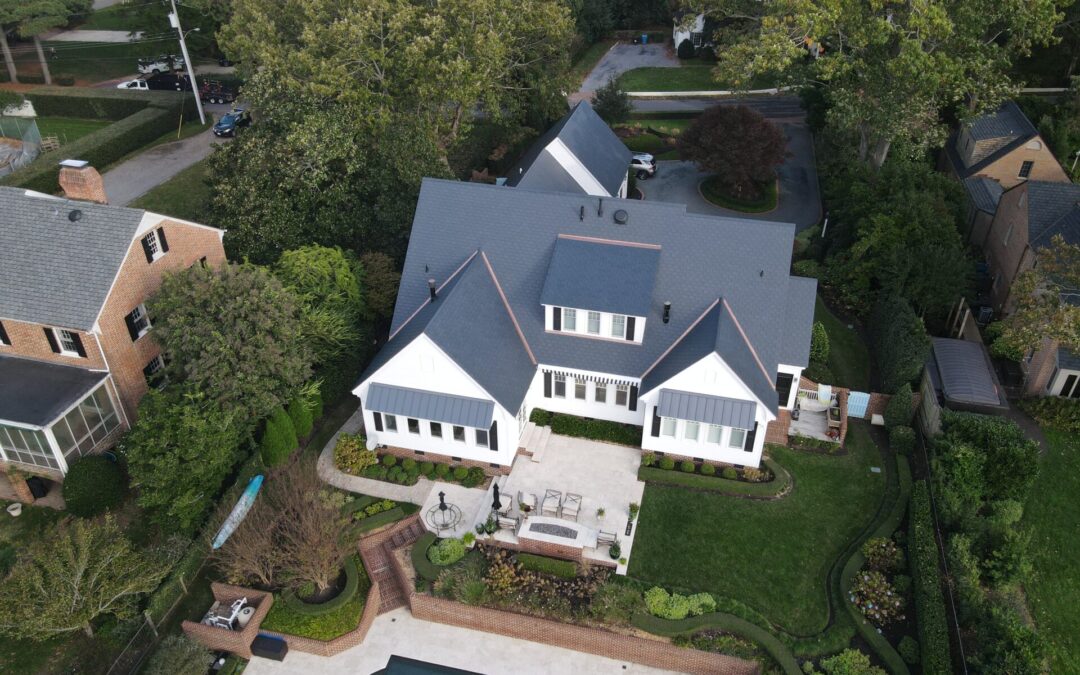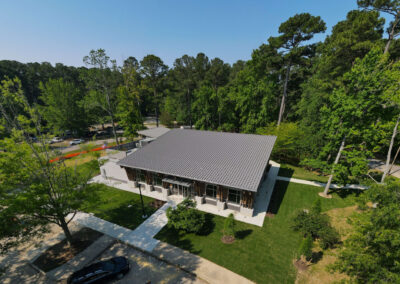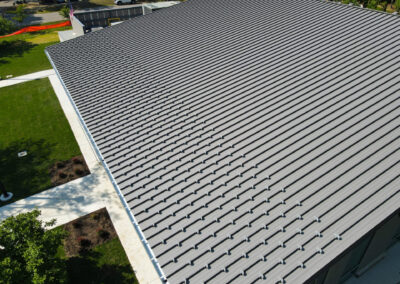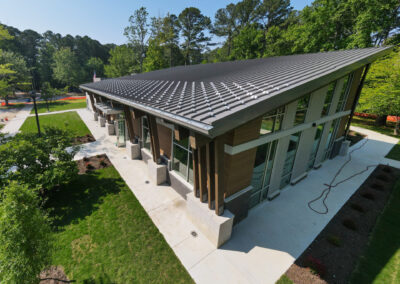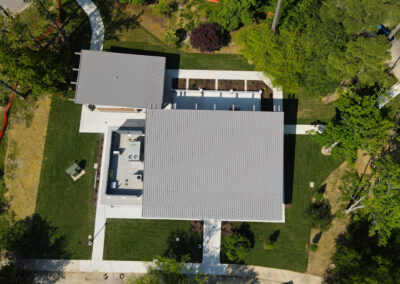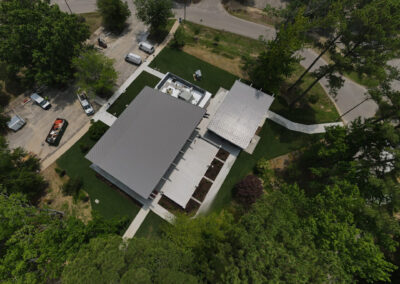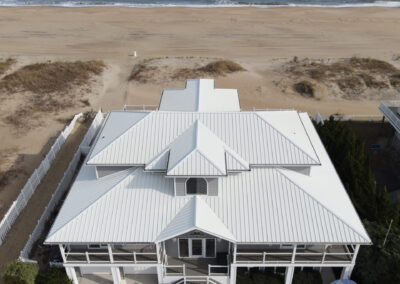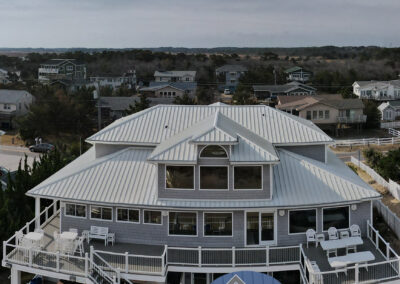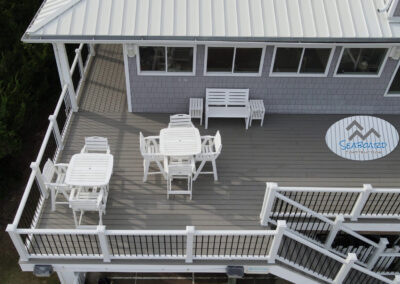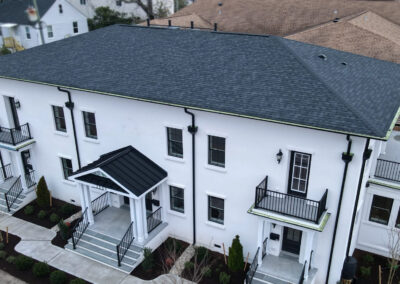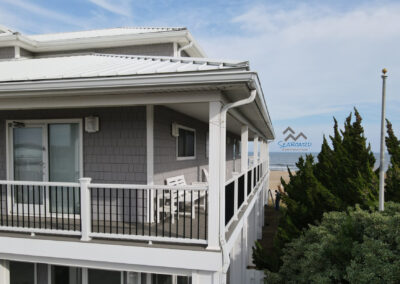Virginia Metal Roofing Company
Hampton Roads Metal Roofing Company
Call now 757-210-6580
Choose Seaboard Construction for Superior Standing Seam Metal Roofing in Hampton Roads
When it comes to the best standing seam metal roofing in the Hampton Roads area, Seaboard Construction is the top choice. Our commitment to customer satisfaction and expert craftsmanship sets us apart from other metal roofing companies in Norfolk, Chesapeake, Virginia Beach, Newport News, and beyond.
What makes us different? We pride ourselves on our in-house fabrication and forming of metal roofing panels. This enables us to maintain total control over the process, ensuring precise and excellent panels every time. Our skilled team of metal roofers pays meticulous attention to detail, guaranteeing installations that exceed the highest standards.
As a local metal roofing company, we understand the unique needs and challenges of the Hampton Roads area. Our professionalism, reliability, and exceptional customer service have earned us a strong reputation. When you choose Seaboard Construction, you can trust that your standing seam metal roof will be installed with the utmost care and expertise it deserves.
To further prioritize your satisfaction, we offer a comprehensive 2-year craftsmanship warranty on all installed standing seam metal roofs. This warranty provides peace of mind, knowing that any defects or issues resulting from our workmanship will be promptly addressed and resolved.
Are you ready to experience the excellence and customer satisfaction that sets Seaboard Construction apart? Contact us today to discuss your project and discover how we can meet your metal roofing needs in the Hampton Roads region.
Reach out to our team of expert metal roofing contractors today for a free roof inspection!
Seaboard Construction is a Class A Certificated contractor specializeing in commercial and residential roofing solutions in Hampton Roads.
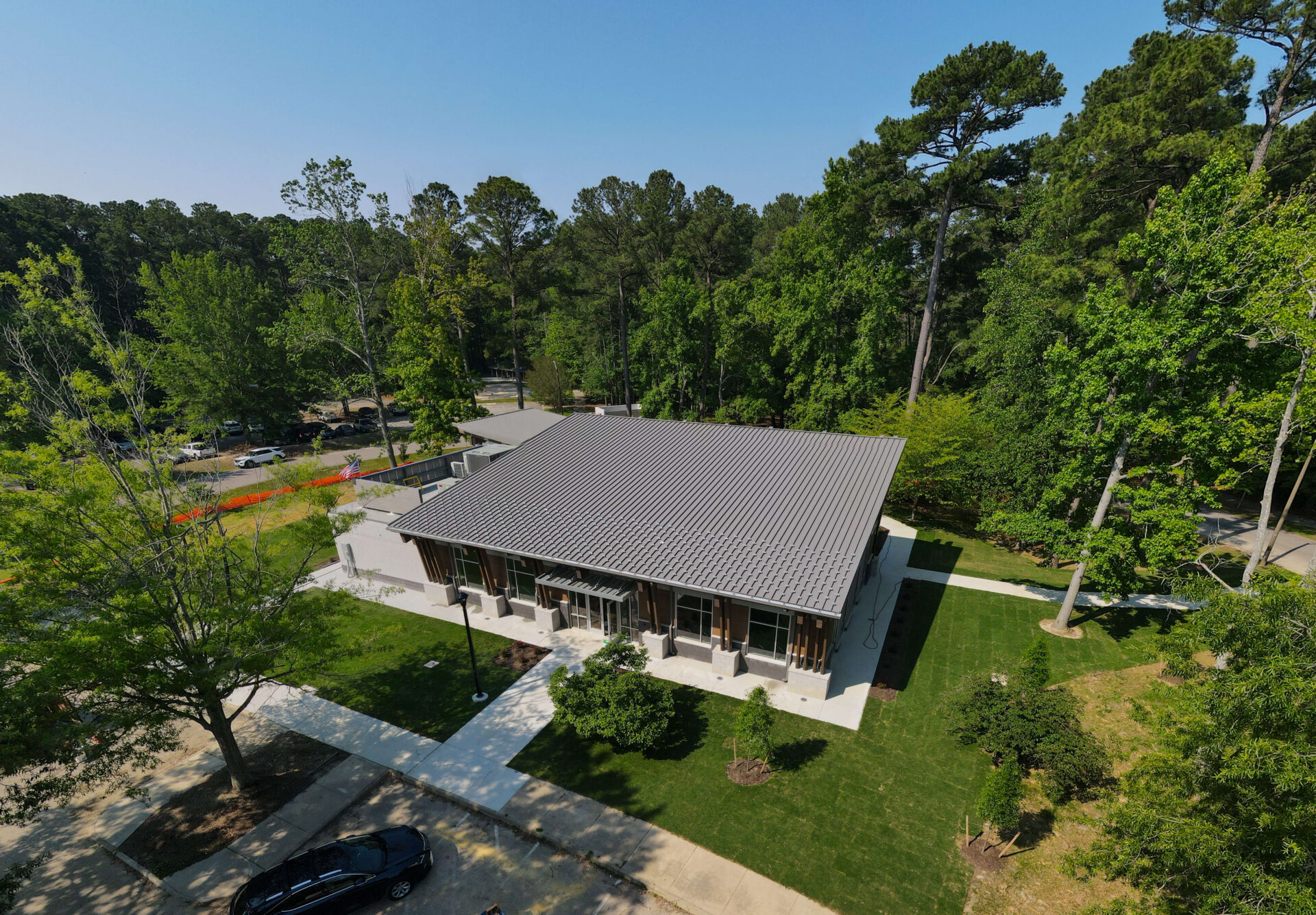
Standing Seam Metal Roof Gallery
Call 757-210-6580
How Long Should Your Roof Last?
In this article we’ll review factors influencing the lifespan of metal roofs, shingled roofs and flat roofs:
- Importance of understanding the lifespan of different roofing materials for homeowners
- Overview of metal roofs, shingled roofs, and flat roofs as common roofing options
- Exploring the exceptional durability and longevity of metal roofs
- Advantages of metal roofs, including resistance to weathering, pests, and fire
- Comparison of metal roofs with shingled roofs and flat roofs in terms of lifespan
- Factors influencing the lifespan of roofs, such as climate and quality of installation
- Importance of proper maintenance and regular inspections to extend roof lifespan
- Long-term financial benefits of metal roofs, including energy efficiency and reduced maintenance costs
- Answering the question: What is the life expectancy of a standing seam metal roof?
Importance of understanding the lifespan of different roofing materials
Understanding the lifespan of different roofing materials is of utmost importance for homeowners. The roof is a critical component of any building, providing protection against the elements and ensuring the integrity of the structure. It’s essential to be aware of the lifespan of various roofing materials to make informed decisions about maintenance, repairs, and ultimately, roof replacement. By understanding the lifespan of different roofing types, homeowners can plan and budget accordingly, ensuring the long-term durability and functionality of their roofs.
Metal roofs, shingled roofs, and flat roofs: an overview
In this blog post, we will focus on three common types of roofs: metal roofs, shingled roofs, and flat roofs. Metal roofs are known for their exceptional durability and longevity, making them a popular choice among homeowners. Shingled roofs, typically made of asphalt or composite shingles, are a traditional option with a wide range of styles and affordability. Flat roofs, common in commercial buildings and some residential structures, have their own set of considerations and requirements. By exploring the lifespan of these roofing types, we will uncover the factors that contribute to their longevity and why metal roofs offer superior durability and longevity compared to shingled roofs and flat roofs.
Exploring the lifespan of these roofing types and why metal roofs offer superior longevity
In this article, we will cover the lifespan of metal roofs, shingled roofs, and flat roofs, considering factors such as material quality, maintenance, and environmental conditions. By examining these aspects, we aim to demonstrate why metal roofs offer superior longevity compared to shingled roofs and flat roofs, providing homeowners with a durable and long-lasting roofing option.
Understanding Metal Roofs
Characteristics of metal roofs:
Metal roofs are roofing systems made primarily from metal materials such as steel, aluminum, or copper. They are characterized by their durability, strength, and sleek appearance. Metal roofs consist of metal panels or shingles that are interlocked or fastened together to form a protective layer over the building. These roofs can come in various profiles, including standing seam, corrugated, or metal tiles, offering versatility in design and style.
Advantages of metal roofs:
Exceptional durability and resistance to weathering:
Metal roofs are renowned for their exceptional durability and resistance to weathering. They are highly resistant to damage from hail, high winds, and heavy snow loads. Metal roofs do not rot, crack, or warp like some other roofing materials, ensuring long-term protection for your home. Additionally, metal roofs are resistant to fire, pests, and mildew, providing homeowners with peace of mind and reducing the risk of structural damage.
Longevity and extended lifespan:
One of the standout advantages of metal roofs is their longevity and extended lifespan. Metal roofs have an impressive lifespan of 40 to 70 years or more, depending on the material and maintenance. Compared to other roofing materials such as asphalt shingles or flat roofs, which typically require replacement every 20 to 30 years, metal roofs offer superior longevity. Investing in a metal roof means fewer future replacements and reduced maintenance costs over the life of the roof.
Energy efficiency and cost savings:
Metal roofs offer excellent energy efficiency, resulting in potential cost savings for homeowners. The reflective properties of metal roofs allow them to reflect solar heat, keeping the interior of the building cooler in hot climates. This reduces the reliance on air conditioning systems, leading to lower energy bills. Additionally, some metal roofs can be installed with insulation materials, further enhancing their energy efficiency and reducing heating and cooling costs. Over time, the energy savings from a metal roof can offset the initial investment, making it a cost-effective choice for homeowners.
Understanding Shingled Roofs
Definition and characteristics of shingled roofs:
Shingled roofs are a popular and traditional roofing option, typically made from asphalt. These roofs consist of individual shingles that overlap to create a waterproof barrier. Shingles can come in various styles of architectural shingles, offering a distinct appearance. Shingled roofs are known for their versatility and ability to complement different architectural styles, making them a common choice for residential buildings.
Advantages of shingled roofs:
Affordability and ease of installation:
Shingled roofs are generally more affordable upfront compared to other roofing materials, including metal roofs. The lower cost of materials and ease of installation contribute to the affordability of shingled roofs. In addition, shingles are lightweight, making them easier to handle and install, which can save on labor costs. For homeowners on a budget or those looking for a cost-effective roofing option, shingled roofs offer an attractive choice.
Variety of styles and designs:
One of the advantages of shingled roofs is the wide variety of styles and designs available. Asphalt and composite shingles come in various colors, textures, and shapes, allowing homeowners to customize the look of their roofs to match their desired aesthetic. This allows homeowners to achieve their desired look while maintaining the affordability and practicality of a shingled roof.
Adequate durability with proper maintenance:
Shingled roofs can provide adequate durability when properly installed and maintained. Regular maintenance, such as cleaning gutters, removing debris, and addressing damaged or missing shingles, is essential to ensure the longevity of shingled roofs. With proper care, shingled roofs can last around 20 to 30 years. While the lifespan of shingled roofs may be shorter compared to metal roofs, their durability can still meet the needs of many homeowners. By following recommended maintenance practices, homeowners can maximize the lifespan and performance of their shingled roofs.
Understanding Flat Roofs
Definition and characteristics of flat roofs:
Flat roofs, as the name suggests, have a minimal slope or no noticeable pitch, creating a flat surface. They are commonly found in commercial buildings, modern architecture, and some residential structures. Flat roofs differ from sloped roofs in terms of design and construction. Instead of using traditional roofing materials like shingles or metal panels, flat roofs typically utilize a single-ply membrane, built-up roofing, or modified bitumen. These materials provide a waterproof layer that covers the entire roof surface.
Advantages of flat roofs:
Simplicity and cost-effectiveness:
Flat roofs offer simplicity in design and construction, resulting in cost-effectiveness. The flat surface and straightforward installation process make them less labor-intensive compared to roofs with complex slopes. The use of fewer materials and simpler construction methods can contribute to cost savings, making flat roofs a practical option for budget-conscious individuals or commercial projects with large roof areas.
Usability as a functional space:
One advantage of flat roofs is the opportunity to utilize the roof space for various purposes. Flat roofs provide a platform for additional outdoor living areas, such as rooftop gardens, patio spaces, or solar panel installations. With proper planning and construction, flat roofs can serve as functional spaces that enhance the overall usability of a building. This versatility makes flat roofs appealing to homeowners or businesses looking to maximize the available space.
Adequate durability with proper installation and maintenance:
While flat roofs may not have the same inherent durability as some sloped roofing materials, they can offer sufficient durability when installed and maintained correctly. The key to a long-lasting flat roof lies in proper installation techniques and regular maintenance. Professional installation ensures proper sealing and waterproofing, preventing water pooling and potential leaks. Regular inspections, prompt repairs of any damage or deterioration, and routine maintenance, such as cleaning gutters and removing debris, are crucial to maintaining the integrity and longevity of flat roofs.
Comparing the Lifespan of Different Roofing Types
Metal roofs: What is the life expectancy of a standing seam metal roof?
Factors influencing the lifespan of metal roofs:
Several factors can influence the lifespan of a standing seam metal roof. These factors include the quality of the materials used, proper installation techniques, regular maintenance, and the environmental conditions in which the roof is exposed. Metal roofs made from high-quality materials, such as galvanized steel or aluminum, and installed by experienced professionals tend to have longer lifespans. Regular maintenance practices, such as inspecting for and addressing any damage or issues, also contribute to the longevity of metal roofs. Additionally, environmental factors like climate, exposure to extreme weather conditions, and proximity to saltwater or industrial areas can impact the lifespan of metal roofs.
Typical life expectancy of a standing seam metal roof:
When properly installed and maintained, a standing seam metal roof can have a lifespan of 40 to 70 years or more. Metal roofs are renowned for their exceptional durability and longevity. Their resistance to weathering, fire, pests, and rot contributes to their extended lifespan. Unlike other roofing materials that may require replacement every few decades, a well-maintained metal roof can provide decades of reliable protection for a building. The longevity of metal roofs makes them an attractive option for homeowners seeking a roofing material with long-term value and reduced maintenance costs.
Shingled roofs: Average lifespan and factors affecting it:
Different types of shingles and their durability:
The lifespan of shingled roofs can vary depending on the type of shingles used. Architectural shingles, which are thicker and more durable, can last up to 20 to 30 years. The durability of shingles is influenced by factors such as material quality, thickness, and resistance to weathering and UV rays. It’s important to consider the specific type of shingles and their expected lifespan when evaluating the longevity of shingled roofs.
Maintenance practices and impact on lifespan:
Proper maintenance practices play a significant role in the lifespan of shingle roofs. Regular inspections, prompt repairs of damaged or missing shingles, and routine maintenance can help extend the lifespan of a shingle roof. Neglecting maintenance, such as allowing moss or algae growth, failing to address leaks, or neglecting to clean gutters, can significantly shorten the lifespan of shingle roofs. By implementing a proactive maintenance plan and promptly addressing any issues, homeowners can maximize the lifespan of their shingle roofs and avoid premature replacements.
Flat roofs: Factors influencing their lifespan:
Material choices and their durability:
The choice of materials for flat roofs can impact their lifespan. Different materials, such as single-ply membranes, built-up roofing, or modified bitumen, have varying levels of durability and longevity. Single-ply membranes, including EPDM or TPO, are known for their durability and can last 20 to 30 years or more with proper maintenance. Built-up roofing, consisting of multiple layers of bitumen and reinforcement, can provide an extended lifespan of 20 to 40 years. The choice of materials should be based on their suitability for the specific application and the desired lifespan.
Proper installation and maintenance for extended lifespan:
The installation and maintenance of flat roofs are critical for their longevity. Proper installation techniques, including ensuring proper drainage, adequate insulation, and effective sealing, are essential to prevent water pooling and potential leaks. Regular inspections, prompt repairs of any damage, and routine maintenance, such as cleaning gutters and removing debris, are crucial for the extended lifespan of flat roofs. Additionally, regular roof coatings or treatments can help protect the surface from UV rays, weathering, and deterioration. By following recommended installation practices and implementing a proactive maintenance plan, homeowners can maximize the lifespan of their flat roofs and avoid premature failures.
Call now 757-210-6580
Metal Roofers in Virginia

Virginia Beach Metal Roofing Company
Advantages of Metal Roofs: A Long Lifespan
Metal roof durability and resistance to weathering:
Impact of extreme weather conditions on metal roofs:
Metal roofs demonstrate exceptional durability and resilience when exposed to extreme weather conditions. They are designed to withstand high winds, heavy rain, hailstorms, and even snow loads. Metal panels interlock tightly, creating a barrier against water penetration and minimizing the risk of leaks. Additionally, metal roofs have high resistance to fire, making them an excellent choice for areas prone to wildfires. Their ability to withstand these weather elements significantly contributes to their extended lifespan and reduces the need for frequent repairs or replacements.
Protection against pests, rot, and decay:
Metal roofs provide effective protection against pests, such as rodents or insects, that can cause damage to roofing materials. Unlike wood shakes or shingles, metal is not susceptible to rot, decay, or insect infestations. This durability ensures that the structural integrity of the roof remains intact over time. With proper installation and maintenance, metal roofs can maintain their strength and protective properties, offering long-term peace of mind for homeowners.
Metal roof longevity and extended lifespan:
Factors contributing to the long lifespan of metal roofs:
Several factors contribute to the extended lifespan of metal roofs. Firstly, the use of high-quality metal materials, such as galvanized steel or aluminum, enhances their durability and resistance to weathering. Metal roofs are also engineered to expand and contract with temperature changes, minimizing the risk of cracking or warping. Additionally, metal roofs do not absorb water, reducing the potential for water-related damage and deterioration. These factors combined contribute to the longevity and extended lifespan of metal roofs.
Reduced need for replacement or major repairs:
Metal roofs require fewer replacements or major repairs compared to other roofing materials. With a lifespan of 40 to 70 years or more, homeowners can enjoy the benefits of a metal roof for several decades. The reduced need for replacement translates to cost savings over time. While periodic maintenance, such as inspections and minor repairs, is still recommended, the overall maintenance requirements for metal roofs are relatively low. This reduces the inconvenience and expenses associated with frequent repairs or replacements, making metal roofs a cost-effective and long-lasting roofing solution.
Metal roof energy efficiency and cost savings:
Insulation properties and impact on energy bills:
Metal roofs offer excellent insulation properties, helping to regulate the temperature inside the building and reduce energy consumption. Metal reflects solar heat, preventing excessive heat absorption and keeping the interior cooler during hot weather. This reduces the reliance on air conditioning systems, resulting in lower energy bills. Additionally, metal roofs can be installed with additional insulation materials, further enhancing their energy efficiency and thermal performance. The insulation properties of metal roofs contribute to long-term energy savings and increased comfort for homeowners.
Long-term financial benefits of metal roofs:
The energy efficiency and longevity of metal roofs provide long-term financial benefits for homeowners. The reduced energy consumption leads to lower energy bills, resulting in cost savings over the life of the roof. Additionally, the extended lifespan of metal roofs means fewer replacements and less frequent major repairs compared to other roofing materials. This reduces the overall maintenance and replacement costs associated with the roof. The combination of energy savings and reduced maintenance expenses make metal roofs a financially advantageous choice for homeowners looking for a roofing material that offers long-term value and cost-effectiveness.
Comparing Metal Roofs with Other Roofing Materials
Shingled roofs:
Average lifespan and comparison with metal roofs:
Shingled roofs, typically made of asphalt or composite shingles, have an average lifespan of around 20 to 30 years. In comparison to metal roofs, which can last 40 to 70 years or more, shingled roofs have a shorter lifespan. The durability and longevity of metal roofs surpass that of shingled roofs, making metal roofs a more reliable and long-lasting option. While shingled roofs may provide adequate protection for a couple of decades, homeowners should be prepared for more frequent replacements compared to the extended lifespan of metal roofs.
Maintenance requirements and potential drawbacks:
Shingled roofs require regular maintenance to ensure their performance and longevity. This includes inspections for damaged or missing shingles, clearing debris from gutters, and addressing any leaks or water damage promptly. Failure to maintain shingled roofs can lead to premature aging, water infiltration, and the need for more extensive repairs. Additionally, shingles may be susceptible to weathering, curling, or cracking over time, especially in areas with harsh climate conditions. The maintenance requirements and potential drawbacks of shingled roofs should be considered when evaluating their lifespan and overall cost-effectiveness.
Flat roofs:
Average lifespan and comparison with metal roofs:
Flat roofs have an average lifespan of around 20 to 30 years, which is similar to shingled roofs but shorter than the lifespan of metal roofs. While proper installation and maintenance can help extend the lifespan of flat roofs, they generally require more frequent replacements compared to the extended longevity of metal roofs. The choice of materials for flat roofs, such as single-ply membranes or modified bitumen, can influence their durability and lifespan. However, flat roofs generally have a shorter lifespan than metal roofs, making metal roofs a more durable and long-lasting option.
Maintenance considerations and limitations:
Flat roofs require regular maintenance to address potential issues such as ponding water, leaks, or membrane deterioration. Proper drainage and waterproofing are crucial for the longevity of flat roofs. Regular inspections, prompt repairs, and periodic roof coatings or treatments to protect against UV rays are essential maintenance practices. However, it’s important to note that flat roofs may have limitations in terms of their design and usability compared to metal roofs. The lack of slope can result in water pooling, which can accelerate wear and tear on the roof membrane. These maintenance considerations and limitations should be taken into account when evaluating the lifespan and suitability of flat roofs compared to metal roofs.
Factors Influencing Roof Lifespan
Climate and weather conditions:
Climate and weather conditions have a significant impact on the lifespan of roofs. Harsh climates with high levels of humidity, extreme temperature fluctuations, or frequent severe weather events can accelerate roof deterioration. For example, constant exposure to intense sunlight, heavy rains, or freezing temperatures can cause roofing materials to expand, contract, crack, or deteriorate over time. Understanding the climate and weather patterns in the specific region where a building is located is crucial in selecting the appropriate roofing materials and maintenance practices to maximize the lifespan of the roof.
Quality of installation and workmanship:
The quality of installation and workmanship plays a vital role in determining the lifespan of a roof. Improper installation techniques or subpar workmanship can result in issues such as poor sealing, inadequate flashing, or improper drainage, which can compromise the roof’s integrity. These issues can lead to water infiltration, leaks, and accelerated deterioration of roofing materials. To ensure a long-lasting roof, it is essential to hire experienced and qualified roofing professionals who follow industry best practices for installation. Proper installation techniques, attention to detail, and adherence to manufacturer guidelines can significantly contribute to the longevity and performance of the roof.
Proper maintenance and regular inspections:
Regular maintenance and inspections are key factors in extending the lifespan of a roof. Routine inspections allow for the early detection of potential issues such as damaged or missing shingles, signs of water damage, or flashing problems. Prompt repairs of any identified issues can prevent further damage and prolong the lifespan of the roof. Regular maintenance practices, including cleaning gutters, removing debris, and addressing any moss or algae growth, are crucial for maintaining the roof’s performance and preventing unnecessary wear and tear. By implementing a proactive maintenance plan and conducting regular inspections, homeowners can identify and address problems before they escalate and negatively impact the lifespan of the roof.
Material choices and product quality:
The choice of roofing materials and their quality significantly affects the lifespan of a roof. High-quality materials, such as premium-grade asphalt shingles or durable metal panels, are designed to withstand the elements and have longer lifespans. Investing in superior quality materials can provide better resistance to weathering, UV rays, and potential damage. It is important to select roofing materials that are suitable for the specific climate and environmental conditions of the area. Additionally, choosing reputable manufacturers and suppliers ensures that the roofing products meet industry standards and have undergone proper testing for quality and durability. The material choices and product quality are essential considerations when aiming to maximize the lifespan of a roof.
That’s a Wrap: How Long Should My Roof Last?
The lifespan of metal roofs, shingled roofs, and flat roofs:
Understanding the lifespan of different roofing materials is essential for making informed decisions when it comes to roof installations or replacements. Metal roofs stand out for their exceptional longevity, with an average lifespan of 40 to 70 years or more. Shingled roofs typically last around 20 to 30 years. Flat roofs, which often utilize single-ply membranes or modified bitumen, have an average lifespan of 20 to 30 years as well. It is important to consider these differences in lifespan when choosing a roofing material that suits your needs and budget.
Advantages of metal roofs in terms of longevity and durability:
Metal roofs offer several advantages in terms of longevity and durability. With their extended lifespan, metal roofs can provide decades of reliable protection for a building, reducing the need for frequent replacements and major repairs. Metal roofs are highly resistant to weathering, impact, fire, pests, and decay, making them a durable choice for various climates and environments. Their ability to withstand extreme weather conditions, such as high winds or heavy rains, ensures peace of mind for homeowners. Additionally, metal roofs require minimal maintenance compared to other roofing materials, further contributing to their long-term value and cost-effectiveness.
Answering the question: What is the life expectancy of a standing seam metal roof?
The life expectancy of a standing seam metal roof is typically 40 to 70 years or more when properly installed and maintained. Factors such as the quality of materials, proper installation techniques, regular maintenance, and the specific environmental conditions in which the roof is exposed can influence the lifespan of a standing seam metal roof. High-quality metal materials, such as galvanized steel or aluminum, contribute to the roof’s durability and resistance to weathering. Regular maintenance, including inspections for damage and addressing any issues promptly, helps ensure the roof’s long-term performance. Overall, standing seam metal roofs are a reliable and long-lasting roofing option, providing homeowners with extended protection, energy efficiency, and peace of mind.
Call now 757-210-6580
Metal Roofers in Virginia
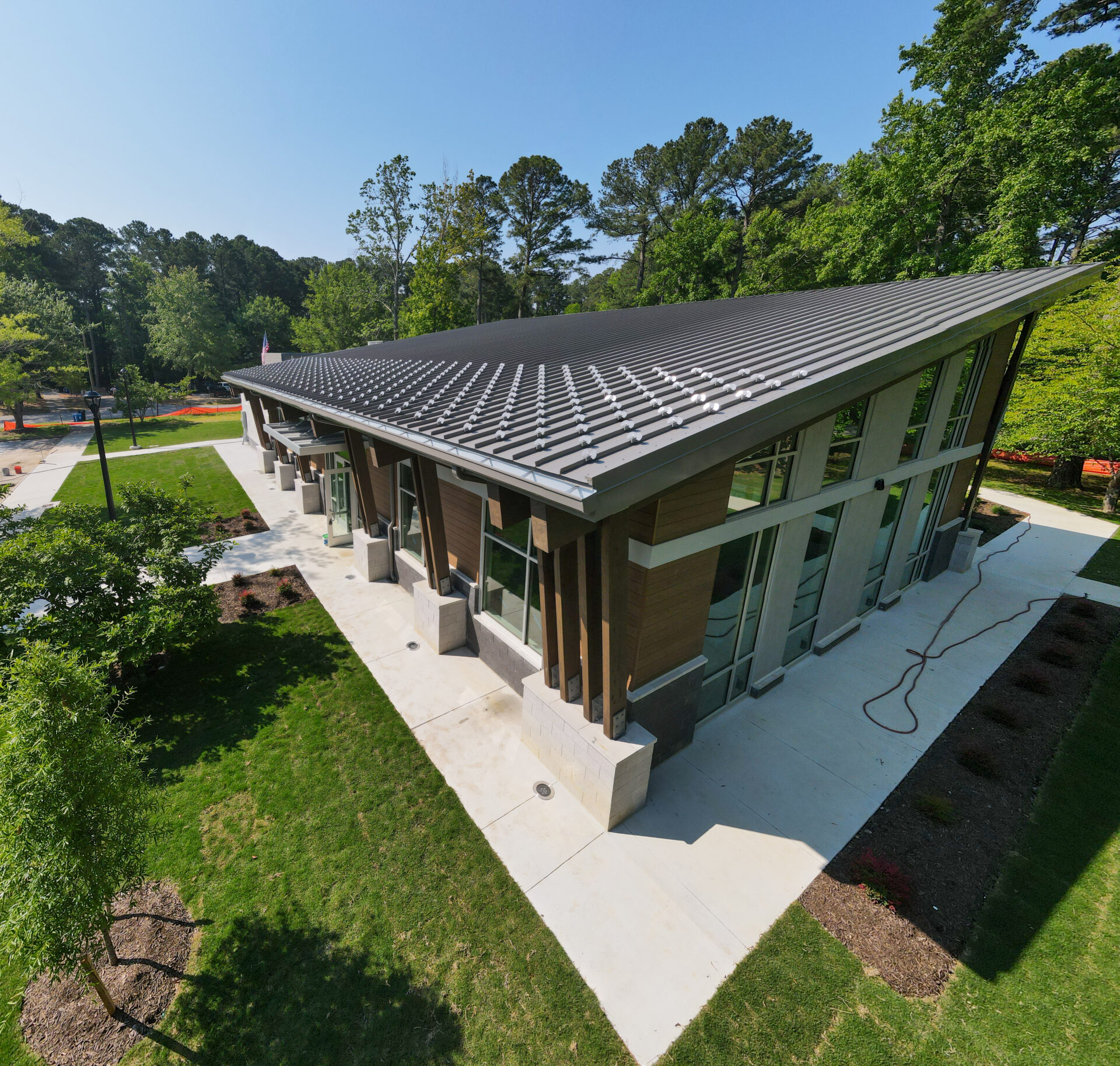
Schedule A Roof Inspection
Call 757-210-6580 or fill out our form
Licensed & Insured Class A Contractor
Hours & Address
Hours
MONDAY – SUNDAY
7:00am – 6:00pm

